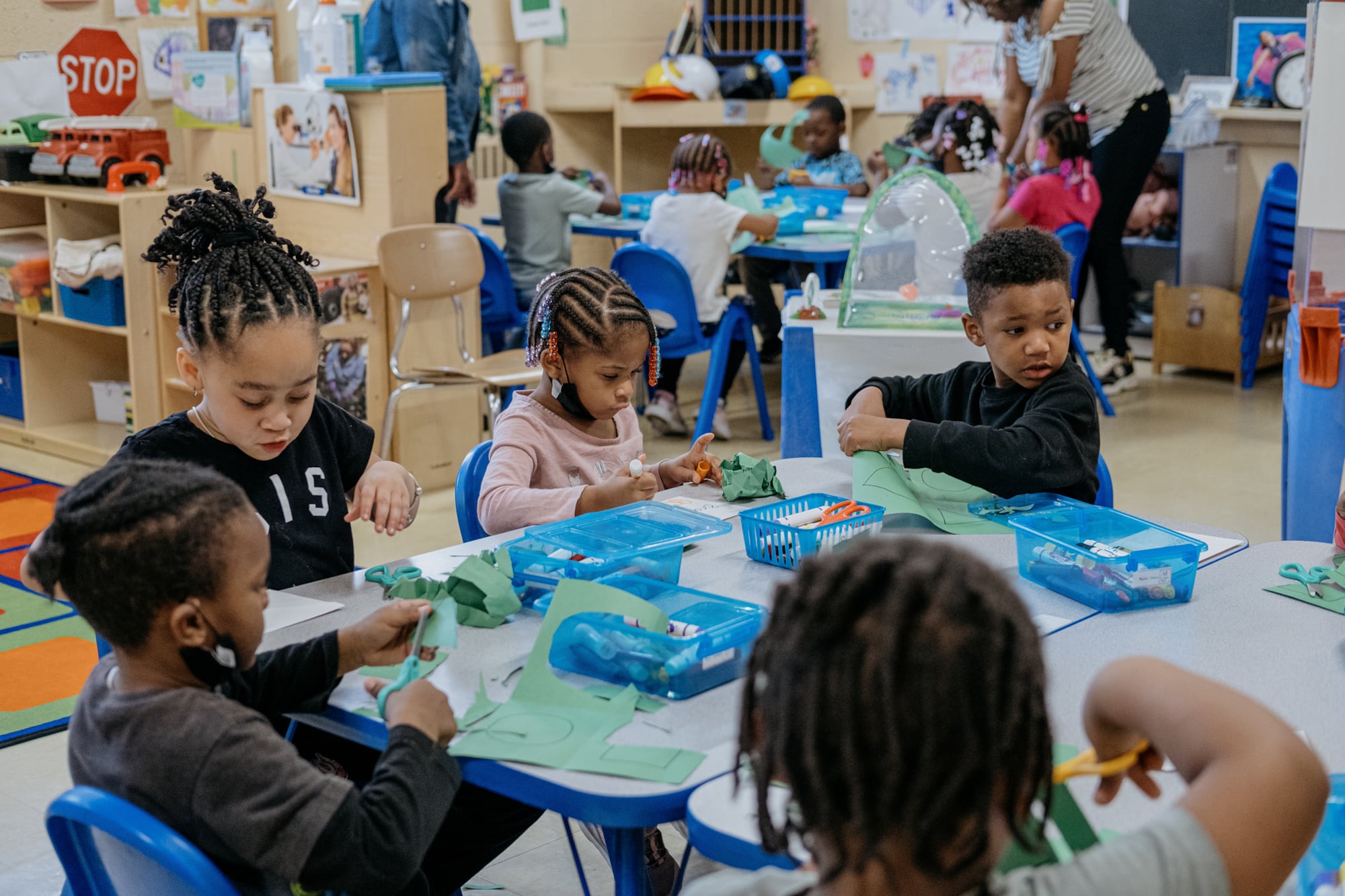Preschool programs in Wayne County are offering signing bonuses up to $2,400 to new teachers in an attempt to address staffing shortages in early education.
Wayne RESA, the county education agency that will pay the bonuses, hopes to enroll roughly 300 students waitlisted for the Great Start Readiness Program, the state-funded preschool for 4-year-olds from low-income families. Officials say they have enough classroom space for those students, but not enough educators to teach them.
In 2021, Gov. Gretchen Whitmer set an ambitious goal of offering free preschool to an additional 22,000 children. Wayne County opened dozens of new classrooms, but eliminating waitlists countywide proved difficult, in part because early education programs struggle to compete for workers with companies like Amazon.
Last year, when Wayne RESA launched a campaign to expand preschool offerings, Kidz World Learning Center agreed to open a classroom.
That room shut down after a year because the center couldn’t find teachers, said director Nahla Musa. She worries that the pandemic labor market, with its rising wages and fierce competition for workers, may have led some early educators to leave the profession for other sectors.
“Where are they?” she asked. “I went to school with some of them. Teachers should be teaching.”
Low pay and high turnover have destabilized Michigan’s early childhood sector, hampering efforts to expand and improve the system. Early educators in general are among the lowest paid workers in the state. Child care workers made a median wage of $11.61 an hour last year.
With its relatively generous state funding, GSRP was designed in part to bring the stability of K-12 education to preschool students from low-income families. Yet teachers in the program often make less than workers with similar credentials.
In Wayne County, lead GSRP teachers made a median of $42,320, or 15% less than the median kindergarten teacher at $49,959, according to 2019-2020 data. And that 15% gap was among the narrowest in the state — teachers in many counties could expect at least a 30% pay bump if they shifted from working with 4-year-olds to 5-year olds.
Statewide, associate teachers who held a certificate in early childhood made a median salary of about $20,000, roughly equivalent to the state’s 2019 minimum wage of $9.45 an hour.
By comparison, a night shift job at an Amazon warehouse in Pontiac pays up to $19.15 an hour, according to Amazon’s website, and includes a $1,000 bonus. Amazon has raised wages for warehouse workers, who only need to be 18 years old to apply.
The signing bonuses offered to new GSRP teachers in Wayne County would be paid only in the first year, and wouldn’t close the wage gap with kindergarten teachers. But officials still hope they will help draw enough new teachers to help meet the county’s enrollment goals. About 100 classrooms countywide are missing at least one teacher.
The bonuses are $2,400 for lead teachers, $1,200 for associate teachers, and $600 for classroom aides. Teachers will receive half of the money when they are hired and the other half in June of 2023. They must sign on before Jan. 31, 2023, to receive the payment, and they can’t have worked in any GSRP program in Wayne County in the last 90 days.
State lawmakers effectively set rough pay levels for GSRP staff each year when they decide on a budget for the program.
This year, lawmakers made a massive new investment in the program, drawing on a historic budget surplus and federal COVID relief funding. By boosting GSRP funding per pupil from $8,700 to $9,150, the Legislature put the program on par with K-12 schools for the first time, a major milestone for a program that started in 1985 with a shoestring budget and a handful of classrooms.
But younger children require more supervision — GSRP classrooms often have three adults to a room — and that comes with additional costs. State officials estimate that the true cost of high-quality preschool for 4-year-olds is $12,700 per pupil.
Daveda Colbert, Wayne RESA superintendent, said even the increased funding levels aren’t enough to support a stable workforce. She said signing bonuses may help draw in new teachers, but they won’t solve the problem alone.
“We should not be competing with Amazon for talent in a classroom,” she said. “If we don’t do something different (as a state) we have to really question if we value … these professions.”
Koby Levin is a reporter for Chalkbeat Detroit covering K-12 schools and early childhood education. Contact Koby at klevin@chalkbeat.org.





